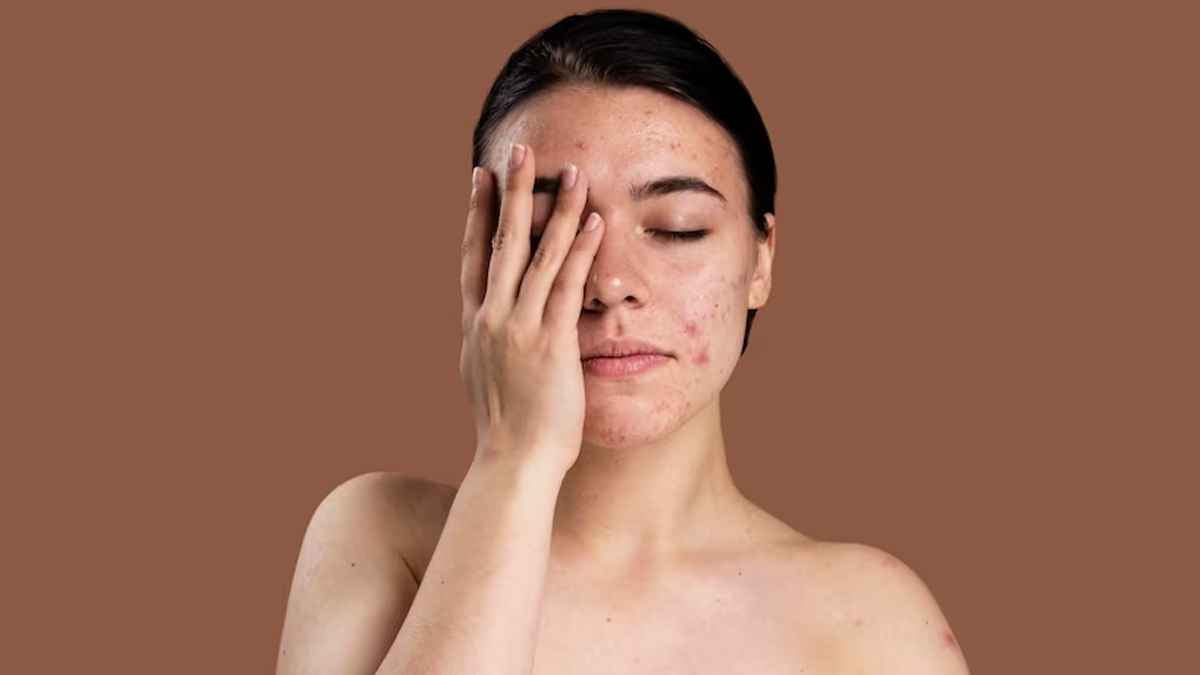
Rosacea is a chronic skin condition that affects millions of people across the globe. It is one of those illnesses that is often misunderstood and misdiagnosed at the same time. Rosacea as the name suggests typically presents as redness, flushing, and sometimes pimples or bumps on the face. While chronic skin condition has four main types, many people are clueless about the distinctions between them.
Table of Content:-
We spoke to our expert Dr Monica Chahar, Chief Dermatologist and Director - Skin Decor, Dwarka, New Delhi, who explained different types of rosacea and how to recognise and treat them.

Type 1- Erythematotelangiectatic Rosacea
Erythematotelangiectatic Rosacea is by far the most common type of rosacea seen across all age groups. It is distinguished by redness, flushing, and readily apparent blood vessels. People with this type of rosacea may experience sensitivity, dryness, and a burning or stinging sensation. The skin may also feel tight and appear scaly or rough.
Treatment for erythematotelangiectatic rosacea may include avoiding triggers such as sun exposure, hot beverages, and spicy foods. Medications such as topical creams, oral antibiotics, and laser therapy may also be recommended in certain conditions.
Type 2 - Papulopustular Rosacea
Papulopustular Rosacea also known as acne rosacea is characterized by redness, swelling, and pimple-like bumps on the face. People affected by this variety may also experience burning, stinging, and sensitivity. Oral and topical antibiotics, as well as other medications such as retinoids and benzoyl peroxide, may help to relieve the symptoms. Laser therapy might also be suggested in some cases.
Also Read: From Over-exfoliation To Not Moisturising: 5 Skincare Mistakes You Should Avoid At Night
Type 3 - Phymatous Rosacea
Phymatous Rosacea is a rare type of rosacea that affects the nose and chin. It is characterized by the thickening of the skin and enlargement of the pores. The skin may also appear bumpy or lumpy, and in severe cases, the nose may become enlarged and bulbous. Treatment may include laser therapy, cryotherapy, and surgical procedures such as dermabrasion or excision. Medications such as isotretinoin may also be prescribed.

Type 4 - Ocular Rosacea
Ocular Rosacea as the name goes affects the eyes and is presented by redness, dryness, itching, and sensitivity in and around the eyes. People with ocular rosacea may also experience blurred vision, light sensitivity, and a feeling of grittiness in the eyes. Treatment for ocular rosacea may include eye drops, antibiotics, and other medications. It is also important to avoid triggers such as sun exposure, wind, and smoke.
Also Read: Summer Skin Rashes: Dermatologist Explains Causes And Treatment
How to Recognise Rosacea
Recognizing rosacea can be challenging because the symptoms can be similar to other skin conditions. However, if you experience persistent redness, flushing, or bumps on your face, it may be a sign of rosacea. Other common signs and symptoms of rosacea include visible blood vessels on the face, dry or rough skin, swelling or oedema, burning or stinging sensation along with sensitivity to products or environmental factors such as sun exposure, wind, or heat. Ocular symptoms such as dryness, redness, and sensitivity may be there.
Bottomline
If you suspect that you may have rosacea, it is important to seek medical attention. A dermatologist can help diagnose your condition and recommend appropriate treatment options. By creating awareness of the different types of rosacea and its symptoms, we can help individuals seek the appropriate diagnosis and treatment, reducing the impact of this condition on their quality of life. With proper diagnosis and treatment, many individuals with rosacea can manage their symptoms and live healthy, active life. Additionally, promoting understanding and acceptance of rosacea can help individuals with this condition feel more comfortable in social situations and reduce the negative impact on their mental health.
Also watch this video
How we keep this article up to date:
We work with experts and keep a close eye on the latest in health and wellness. Whenever there is a new research or helpful information, we update our articles with accurate and useful advice.
Current Version